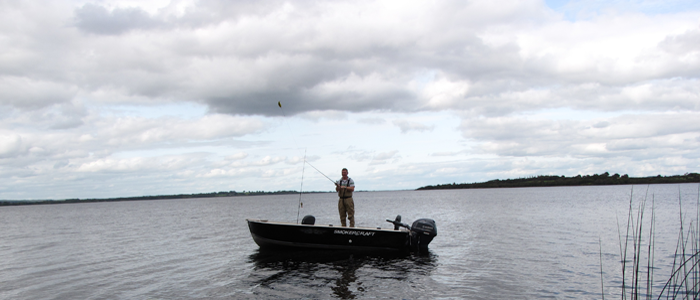BREAM (Abramis brama)
There are two types of bream: bronze and silver. The most common type is the larger bronze bream which develops a brown-bronze appearance as it gets older.
Bream move in shoals making them popular with anglers as catching one means there are more to follow. They can present quite a challenge to hook, however, as they tend to resist bait. Very big bream have the reputation of being one of the most difficult fish to catch. They generally weigh about 3lb (1.36kg). Anything over 8lb (3.36kg) is considered a specimen.
They are not fond of fast-flowing waters preferring instead wide, open spaces such as the lake of Lough Derg. They feed on insect larvae, plant material and bottom-dwelling creatures such as water snails. The bream’s mouth is designed to hoover up the debris at the bottom of the lake in order to locate food. In doing this they muddy the waters and release bubbles which is a clue to the angler as to their whereabouts. They also follow patrol routes for feeding which can make their movements predictable. Nonetheless, once located they are not always easy to lure. Groundbait, maggots, sweetcorn and bread are all great baits for bream.
The season for bream is from June to March in rivers and all year around for still waters.












